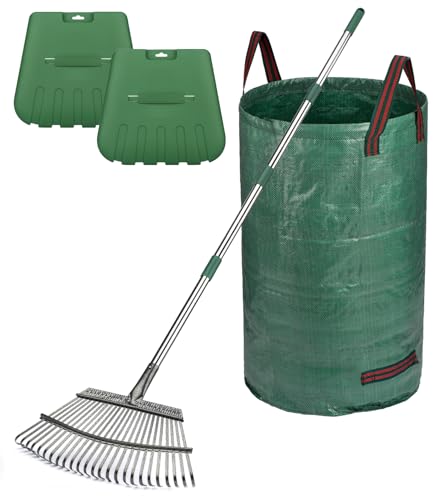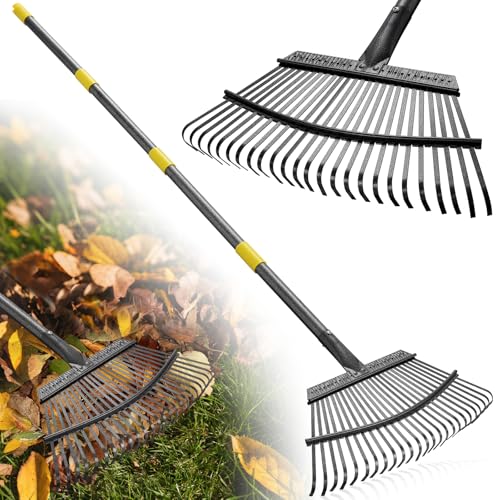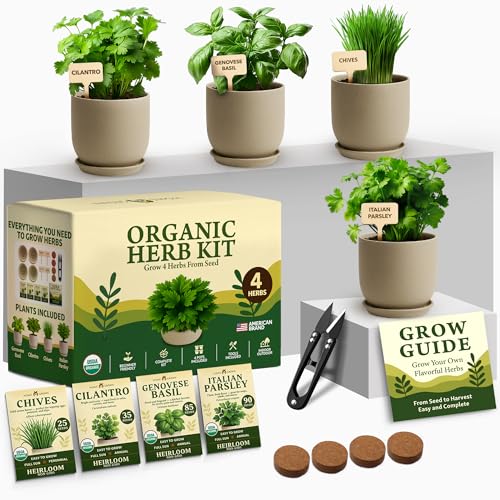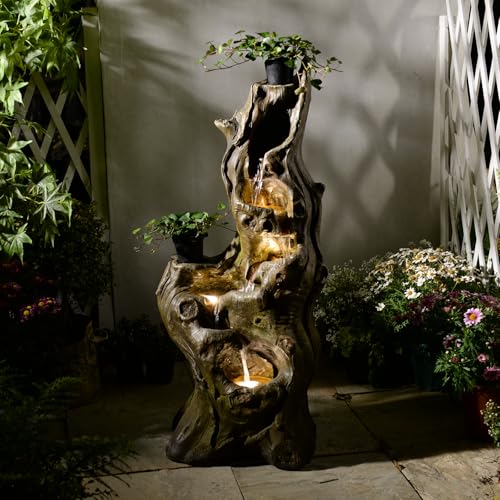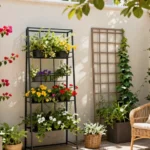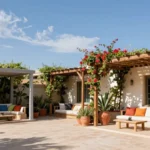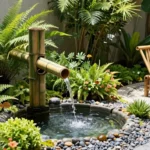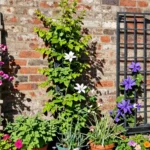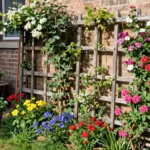We’ve all dreamed of creating that perfect outdoor sanctuary that combines natural beauty with minimal maintenance. Rock gardens offer the ideal solution – transforming ordinary spaces into stunning landscapes that thrive with little intervention while providing year-round visual interest.
Whether you’re working with a sloped yard that’s challenging to industry or simply want to add texture and dimension to your garden, rock gardens deliver impressive results. We’ll explore creative ideas that work for every budget and space, from compact corner installations to sprawling alpine-inspired designs.
The best part? Rock gardens actually improve over time, developing character as plants establish themselves between carefully placed stones. We’re here to guide you through innovative approaches that’ll turn your outdoor space into a low-maintenance masterpiece that neighbors will envy and you’ll enjoy for years to come.
Create a Desert-Inspired Rock Garden With Succulents and Cacti
Desert rock gardens offer stunning visual appeal while requiring minimal water and upkeep. We’ll show you how to design a drought-tolerant industry that thrives in challenging conditions.
Choose Drought-Resistant Plants for Low Maintenance
Succulents form the backbone of any successful desert rock garden design. We recommend starting with hardy varieties like sedum, hens and chicks, and jade plants that store water in their thick leaves. Barrel cacti add dramatic vertical elements while requiring water only once every two weeks during growing season.
Agaves create striking focal points with their architectural rosette shapes and sword-like leaves. We suggest placing larger specimens like century plants at corners or garden entrances for maximum impact. Prickly pear cacti spread naturally to fill spaces between rocks while producing vibrant yellow or pink blooms in spring.
Aloe varieties offer healing properties alongside their sculptural beauty. We’ve found that aloe vera and torch aloe work exceptionally well in rock crevices where their roots can spread without becoming waterlogged. Desert marigolds and brittlebush provide seasonal color bursts without demanding frequent irrigation.
Incorporate Different Rock Sizes and Textures
Boulder placement creates the foundation for authentic desert aesthetics. We position large sandstone or granite boulders first to establish the garden’s main structure and sight lines. Medium-sized rocks fill gaps between boulders while creating natural planting pockets for succulents.
Decomposed granite provides excellent drainage while mimicking natural desert floors. We spread this material around plant bases to prevent moisture retention that could damage sensitive roots. Lava rock adds striking color contrast with its deep red and black tones.
River rocks create smooth transitions between different garden zones. We use these rounded stones to define pathways and direct water flow during occasional rainfall. Crushed gravel in earth tones ties the entire composition together while suppressing weeds naturally.
Add Sand Pathways Between Rock Clusters
Sand pathways enhance the authentic desert garden experience while providing practical access routes. We create meandering trails using coarse sand mixed with fine gravel for better stability underfoot. These pathways should wind naturally between rock formations rather than cutting straight lines.
Stabilized sand prevents erosion while maintaining the natural desert appearance. We recommend using polymeric sand that hardens slightly when moistened but remains permeable for drainage. Edge restraints made from steel or stone keep pathway materials contained.
Stepping stones embedded within sand paths add visual interest and safer footing. We space flat sandstone or flagstone pieces 18 to 24 inches apart for comfortable walking stride. Native desert grasses planted alongside pathways soften harsh edges while requiring minimal supplemental watering.
Design a Japanese Zen Rock Garden for Peaceful Meditation
Moving beyond desert landscapes, we can create a completely different aesthetic that emphasizes tranquility and spiritual contemplation. Japanese Zen rock gardens offer a minimalist approach that transforms outdoor spaces into meditative retreats using symbolic natural elements.
Use Smooth River Rocks and Pebbles
Larger rocks serve as the fundamental sculptural elements in our Zen garden design, representing enduring natural features like mountains or islands while symbolizing eternity. We should place these primary visual anchors first since they’ll guide the entire composition of our space.
Smooth river rocks work exceptionally well for this purpose because they’ve been naturally polished by water over time. We can combine them with small pebbles such as finely crushed gravel or pea gravel, which are easy to rake and maintain throughout the seasons.
Size variation creates visual depth in our garden layout. We recommend using three different rock sizes: large statement pieces (12-24 inches), medium accent rocks (6-12 inches), and small pebbles (1-3 inches) to establish a natural hierarchy that draws the eye through the space.
Create Raked Sand Patterns for Visual Interest
Gravel or sand gets raked into exact patterns that symbolize water elements, creating the illusion of flowing streams or calm lakes within our dry industry. These patterns evoke different moods and seasons depending on the design we choose.
Lines around rocks simulate water ripples, suggesting the gentle disturbance of a stone dropped into still water. We can create these circular patterns using a fine-toothed metal rake, working outward from each rock placement.
Wavy lines suggest meandering streams that flow through our garden space, while straight parallel lines represent serenity or frozen winter scenes. Using a wide-toothed rake for these broader patterns helps us achieve the traditional aesthetic.
The raking process itself becomes meditative, aiding our concentration and mindfulness practice. We find that spending time creating and maintaining these patterns provides the same contemplative benefits as viewing the finished garden.
Include Minimalist Plant Selections
Plants are used sparingly to maintain the essential minimalist aesthetic that defines authentic Zen garden design. We select only a few strategic plantings that complement rather than compete with our rock and gravel elements.
Moss works beautifully as a subtle ground cover that adds soft green texture without overwhelming the space. We can encourage moss growth in shaded areas where it’ll naturally establish itself over time.
Small bamboo varieties provide gentle vertical interest while maintaining the clean lines essential to Zen aesthetics. We recommend choosing clumping varieties rather than spreading types to maintain control over the garden’s appearance.
Simple evergreens such as small junipers or dwarf pines offer year-round structure while honoring the traditional Japanese garden palette. We position these plants as accent pieces rather than focal points, ensuring they support rather than dominate our rock compositions.
Build a Terraced Rock Garden on Sloped Terrain
Sloped terrain presents unique opportunities for creating stunning terraced rock gardens that combine structural stability with natural beauty. We’ll transform challenging hillside areas into captivating outdoor spaces through strategic terracing techniques.
Construct Retaining Walls With Natural Stone
Building retaining walls forms the foundation of any successful terraced rock garden design. We recommend using natural stones like flagstone or fieldstone for their durability and authentic aesthetic appeal. These materials create distinct planting levels while effectively stabilizing soil and preventing erosion on sloped surfaces.
Dry stacking stones without mortar produces a rustic appearance that complements alpine settings perfectly. Alternatively, we can mortar set the stones for enhanced stability when dealing with steeper gradients. Large boulders anchor the structure at key points while smaller stones fill gaps and create natural transitions between levels.
Plant Alpine Flowers Between Rock Levels
Alpine flowers thrive in the well drained conditions that terraced rock gardens naturally provide. We strategically place these hardy plants between rock layers to add vibrant color and soften the rugged stonework. Sedums offer reliable blooms and drought tolerance throughout growing seasons.
Saxifrage creates delicate cascading effects when planted in rock crevices. Dwarf irises provide early spring color before other plants emerge. Creeping thyme spreads naturally across stone surfaces while releasing pleasant fragrances when stepped on. These alpine varieties adapt exceptionally well to sloped terraces and establish strong root systems in rocky environments.
Install Proper Drainage Systems
Effective drainage prevents waterlogging and soil erosion that can damage terraced gardens over time. We incorporate gravel or coarse sand beneath planting areas to encourage proper water flow away from plant roots. This base layer creates the foundation for healthy plant growth in rocky conditions.
Perforated drainage pipes installed behind retaining walls channel excess water safely away from the structure. Proper grading ensures water flows downhill naturally without creating problematic pooling areas. We position drainage outlets at strategic points to direct water toward appropriate collection areas or natural drainage paths.
Construct a Water Feature Rock Garden With Streams and Pools
Moving beyond static rock arrangements, water features transform your garden into a ever-changing network that engages multiple senses. Streams and pools create movement and sound while supporting diverse plant life and attracting beneficial wildlife to your outdoor space.
Incorporate Natural Stone Water Basins
Stone basins serve as elegant focal points that collect water in naturalistic containers seamlessly blending with surrounding rocks. We recommend positioning these troughs strategically throughout your garden to function as birdbaths, small ponds, or decorative water catchments that add both beauty and utility. River rocks and boulders naturally shape the basin edges, creating organic transitions between water and stone elements.
Large flat stones work perfectly as spillways, allowing water to cascade gently from one level to another. Smaller stones fill gaps around basin perimeters, preventing erosion while maintaining the natural aesthetic. These stone containers require minimal maintenance once established and provide essential water sources for local wildlife.
Add Aquatic Plants Around Water Elements
Aquatic and moisture loving plants soften the hard edges of rocks while integrating water elements with lush greenery. Water lilies thrive in deeper pool areas, creating beautiful floating blooms that provide shade for fish and reduce algae growth. Marsh marigolds add bright yellow flowers to shallow water zones, while pickerelweed contributes vertical purple spikes that attract pollinators.
Ferns flourish in the moist soil surrounding water features, creating natural transitions between aquatic and terrestrial plantings. We suggest planting these moisture loving species in groups to create habitat for beneficial insects and aquatic life. Their varied textures and seasonal changes enhance visual appeal throughout the growing season.
Create Rock-Lined Pathways Alongside Water
Pathways bordered with natural stones guide visitors through your garden while providing structure and accessibility along stream edges. River rocks create informal borders that complement flowing water, while larger flat stones serve as stepping stones across shallow streams. These rock lined paths reinforce the natural theme without overwhelming the water feature’s gentle flow.
Simple dry creek beds extend the water theme during dry periods, using varied stone sizes to suggest seasonal water flow. Formalized stepping stone trails offer more structured access to viewing areas around pools and waterfalls. We recommend spacing stones naturally to encourage slow, contemplative movement through your water garden sanctuary.
Establish a Mediterranean-Style Rock Garden With Herbs
We’ll create a sustainable outdoor space that captures the essence of Mediterranean climate gardens, known for their relaxed yet elegant beauty combined with practical drought tolerance. This approach balances aesthetics with functionality, resulting in a rock garden perfect for warm, sunny environments.
Select Heat-Tolerant Herbs and Aromatics
Mediterranean gardens thrive on drought-resistant, sun-loving herbs that tolerate challenging conditions while providing sensory benefits. We recommend starting with rosemary, lavender, thyme, sage, and oregano as your foundation plants. These aromatic herbs not only survive in heat and dry conditions but also release delightful scents that enhance your garden experience.
Arrange plants with varying heights and textures to create visual interest throughout your herb garden. Mix compact herbs like thyme with taller aromatic shrubs such as rosemary for ever-changing layering. Consider adding oregano as ground cover between rocks, where it’ll spread naturally and soften hard stone edges.
Plant selection should prioritize fragrance and functionality since Mediterranean herbs serve dual purposes as both ornamental and culinary elements. Sage provides silvery foliage that contrasts beautifully with darker stones, while lavender adds purple blooms that attract beneficial pollinators to your rock garden.
Use Limestone and Sandstone for Authentic Appeal
Limestone and sandstone are commonly found in Mediterranean landscapes and lend an authentic, natural look to rock gardens. These stones feature warm, earthy tones and textures that complement herbs perfectly while creating a timeless, sun-soaked aesthetic.
Incorporate larger limestone or sandstone boulders to serve as focal points or natural seating areas within your garden design. We suggest positioning these substantial rocks strategically to create visual anchors while providing functional spaces for relaxation and herb harvesting.
Stone selection should emphasize natural weathering patterns that develop over time in Mediterranean climates. Choose pieces with interesting surface textures and color variations that’ll become more pronounced as your garden matures and herbs establish themselves around the stonework.
Design Gravel Mulch Pathways
Gravel pathways in neutral tones such as beige, terracotta, or pale gray create soft, textured contrast to rocks and plants. We recommend using decomposed granite or fine gravel that complements your chosen stone colors while maintaining the authentic Mediterranean appearance.
Gravel mulch helps with water drainage and prevents weed growth around your herbs, reinforcing the rustic charm typical of Mediterranean gardens. This practical solution reduces maintenance requirements while improving the overall design aesthetic of your rock garden.
Consider dry river rock or pebble beds to simulate natural water features common in Mediterranean terrains. These elements add visual interest between planted areas while improving soil drainage around heat-loving herbs that prefer well-draining conditions.
Develop a Woodland Rock Garden Under Shade Trees
Transform shaded areas beneath your trees into enchanting woodland retreats that embrace natural beauty. We’ll create a serene garden space that thrives in dappled sunlight while maintaining the forest-like atmosphere.
Choose Shade-Loving Perennials and Ferns
Select shade-tolerant plants that flourish under tree canopies to establish your woodland garden’s foundation. Hostas provide excellent foliage texture with their broad leaves in various shades of green, while astilbes offer delicate plumes of flowers in white, pink, and red. Heucheras add year-round color with their vibrant foliage, and bleeding hearts create romantic cascades of heart-shaped blooms.
Native ferns serve as perfect companions for these perennials, bringing authentic woodland texture to your garden design. Consider planting Christmas ferns for evergreen structure or lady ferns for their delicate fronds that sway gently in the breeze. These plants work together to create lush greenery that complements the natural shade environment without requiring full sun exposure.
Incorporate Moss-Covered Boulders
Position large moss-covered boulders throughout your woodland rock garden to create striking focal points that anchor the entire design. Moss naturally thrives in the shady, moist conditions found under trees, softening harsh rock edges and making your garden appear naturally aged. These boulders provide visual weight and structure while offering habitat for beneficial woodland creatures like salamanders and small birds.
We recommend selecting boulders of varying sizes to create natural-looking arrangements that mimic what you’d find in a forest setting. Place them strategically among your plantings to guide the eye through the garden space and create intimate viewing areas. The moss will gradually spread across the stone surfaces, improving the authentic woodland aesthetic over time.
Create Natural Stone Seating Areas
Install seating made from natural stone materials to enhance both functionality and visual appeal in your woodland retreat. Flat stone slabs work perfectly as rustic benches, while large smooth boulders can serve as informal seating or small tables for outdoor enjoyment. These elements blend seamlessly into the woodland environment while providing comfortable spots to relax and appreciate your garden.
Position your stone seating strategically near particularly beautiful plantings or boulder arrangements to create contemplative viewing areas. We suggest using locally sourced stone when possible to maintain authenticity and ensure your seating complements the existing rock elements in your garden. The natural stone surfaces will weather beautifully over time, developing a patina that enhances their organic appearance.
Install a Modern Geometric Rock Garden Design
We’re shifting from traditional natural aesthetics to contemporary precision with modern geometric rock gardens. These designs blend architectural elements with natural materials to create striking outdoor spaces that emphasize clean lines and structured beauty.
Use Angular Cut Stone and Metal Accents
Angular cut stones form the foundation of modern geometric rock gardens by replacing traditional rounded boulders with precisely shaped materials that feature sharp, clean edges. We recommend stacking these stones to create geometric patterns or sculptural installations that provide structured organization throughout your garden space.
Metal accents elevate the contemporary aesthetic by introducing sleek contrasts against natural stone elements. Stainless steel planters, geometric sculptures, and modern edging materials complement the angular stonework while reinforcing the garden’s minimalist theme.
Large stone blocks serve as architectural anchors when arranged in repetitive patterns or stepped formations. These installations create visual rhythm while establishing clear boundaries between different garden zones.
Plant Ornamental Grasses in Structured Patterns
Ornamental grasses soften geometric hardscaping while maintaining the garden’s structured aesthetic through precise placement and repetitive patterns. Blue fescue and fountain grass work exceptionally well between stone arrangements, adding textural contrast without disrupting clean lines.
Structured planting patterns emphasize geometric precision by repeating grass groupings at regular intervals throughout the rock garden. We suggest creating grid patterns or linear arrangements that echo the angular stone formations.
Drought tolerant varieties support sustainable xeriscaping goals while providing year round visual interest through seasonal color changes. These grasses require minimal maintenance once established, aligning with modern rock garden principles of low upkeep design.
Add Contemporary Lighting Elements
LED strip lights embedded along stone edges highlight geometric forms and create dramatic nighttime displays that extend your garden’s visual appeal after dark. These installations emphasize the precise angles and clean lines of modern stonework.
Spotlights accentuate focal points and sculptural elements by directing attention to exact design features throughout the geometric layout. We recommend positioning lights to cast interesting shadows that enhance the three dimensional quality of angular stone arrangements.
Pathway lighting guides movement through structured spaces while reinforcing the garden’s geometric theme through consistent spacing and modern fixture designs. Solar powered options provide sustainable illumination that requires minimal maintenance.
Conclusion
We’ve explored diverse rock garden styles that can transform any outdoor space into a stunning industry sanctuary. From desert-inspired designs with drought-resistant succulents to tranquil Zen gardens with raked gravel patterns each approach offers unique benefits for different environments and preferences.
Whether you’re working with challenging slopes that need terraced answers or shaded woodland areas perfect for fern gardens there’s a rock garden style that’ll suit your space. The beauty of these designs lies in their adaptability – you can incorporate water features for added serenity or choose geometric patterns for a modern architectural feel.
Your rock garden journey starts with selecting the style that resonates with your vision and industry needs. With proper planning and the right plant-and-stone combinations you’ll create an outdoor retreat that becomes more beautiful and established with each passing season.
Frequently Asked Questions
What are the main benefits of rock gardens?
Rock gardens offer exceptional low-maintenance landscaping solutions that transform ordinary spaces into stunning outdoor areas. They improve over time as plants mature among stones, require minimal watering and upkeep, and work well with various budgets and yard challenges. Rock gardens provide year-round visual interest while creating beautiful, sustainable outdoor sanctuaries.
Which plants work best in desert-inspired rock gardens?
Hardy drought-resistant plants thrive in desert rock gardens, including sedum, hens and chicks, barrel cacti, and various succulents. These plants require minimal water and maintenance while providing stunning visual appeal. They’re specifically chosen for their ability to withstand challenging conditions and complement the natural desert aesthetic.
How do I create proper drainage in terraced rock gardens?
Incorporate gravel beneath planting areas and install perforated drainage pipes behind retaining walls to prevent waterlogging. Use natural stones like flagstone or fieldstone for construction, either dry-stacked for rustic appeal or mortared for enhanced stability on steeper slopes. Proper drainage prevents soil erosion and ensures long-term garden stability.
What makes Japanese Zen rock gardens unique?
Zen rock gardens emphasize tranquility and spiritual contemplation through minimalist design. They feature smooth river rocks as sculptural elements, raked gravel patterns symbolizing water, and carefully selected plants like moss and small bamboo. The design focuses on creating meditative spaces that promote peace and reflection through simplicity.
Can rock gardens include water features?
Yes, water feature rock gardens enhance sensory experiences by incorporating natural stone basins, streams, and pools. These elements serve as elegant focal points that blend seamlessly with surrounding rocks. Add aquatic plants like water lilies around water features to soften edges and create lush greenery while maintaining the natural theme.
What plants suit Mediterranean-style rock gardens?
Heat-tolerant herbs excel in Mediterranean rock gardens, including rosemary, lavender, thyme, sage, and oregano. These plants thrive in warm, sunny environments while providing sensory benefits through fragrance and texture. Arrange them with varying heights using limestone and sandstone for authentic Mediterranean aesthetics with excellent sustainability.
How do woodland rock gardens differ from other styles?
Woodland rock gardens thrive in shaded areas using shade-loving plants like hostas, astilbes, and native ferns. They incorporate moss-covered boulders as focal points and natural stone seating areas. These gardens embrace forest-like atmospheres, creating enchanting retreats that work perfectly beneath trees where other garden styles might struggle.
What defines modern geometric rock gardens?
Modern geometric rock gardens blend architectural elements with natural materials, featuring clean lines and structured beauty. They use angular cut stones, metal accents, and geometric patterns with ornamental grasses for textural contrast. Contemporary lighting elements like LED strips highlight geometric forms, creating striking visual appeal both day and night.













